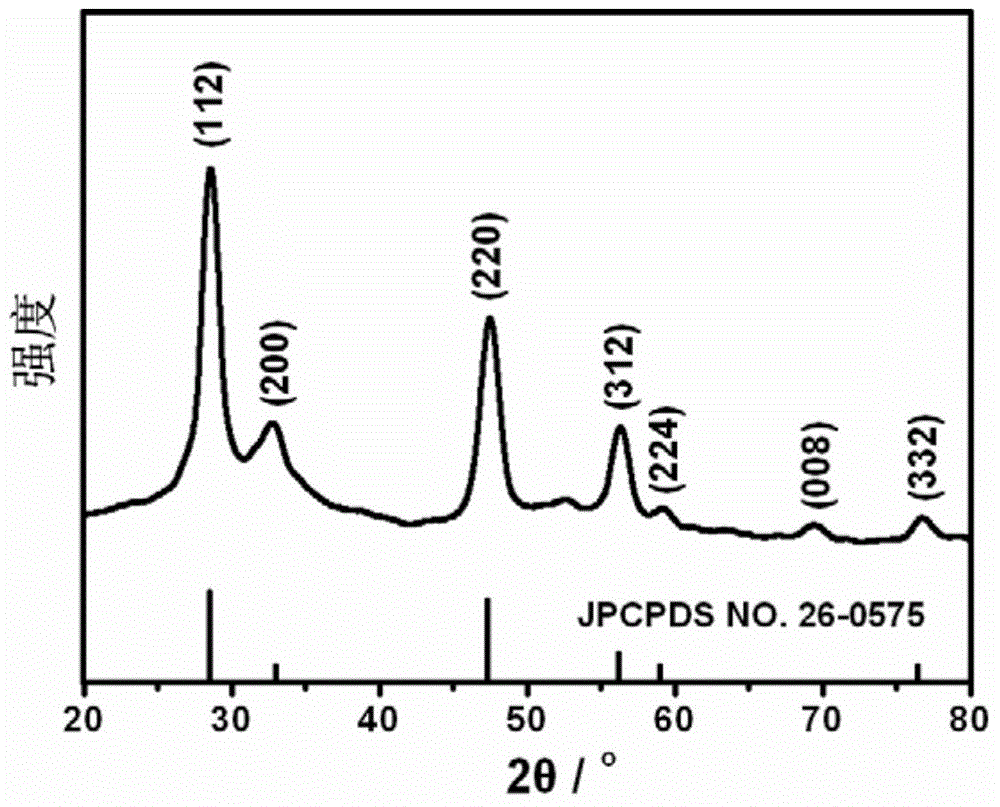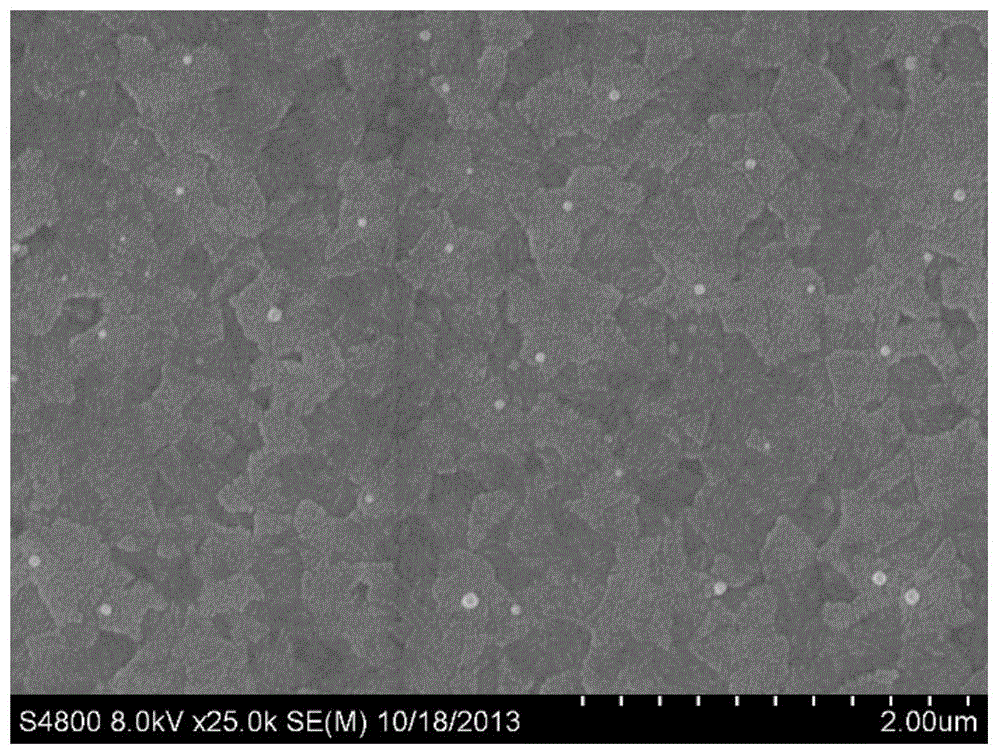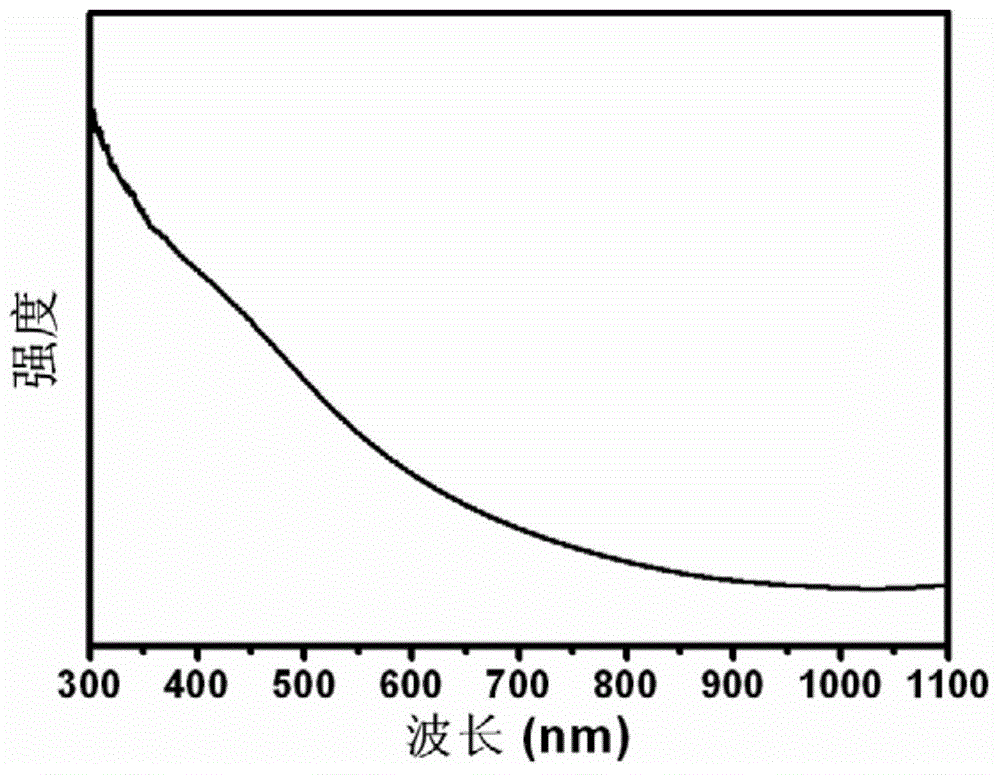Preparation method and product of vitamin C-coated copper zinc tin sulfide nanoparticles
A copper-zinc-tin-sulfur and nanoparticle technology, which is applied in the direction of nanotechnology, nanotechnology, nanotechnology, etc. for materials and surface science, can solve problems such as unfavorable industrial production, and achieve non-toxicity, good application prospects, and reaction The effect of mild conditions
- Summary
- Abstract
- Description
- Claims
- Application Information
AI Technical Summary
Problems solved by technology
Method used
Image
Examples
Embodiment 1
[0034] Dissolve 1.25mmol copper acetate, 0.625mmol zinc chloride, 0.625mmol tin chloride and 1.25mmol vitamin C in 40mL DMSO solvent, heat up to 155°C; at the same time, dissolve 2.5mmol sodium sulfide in a mixed solvent of 5mL ethanol and 50mL DMSO ; Then, drop the sodium sulfide solution into the metal source solution, and drop it in 10 minutes; maintain the reaction temperature at 150 ° C, and react for 6 hours. The CuZnSnS nanoparticles were sedimented with acetone and centrifuged to obtain a black solid. Add 30mL of water, sonicate for 10min, then add 30mL of acetone, and centrifuge to obtain pure vitamin C-coated copper-zinc-tin-sulfur nanoparticles. Its XRD pattern is as follows figure 1 shown. The synthesized copper-zinc-tin-sulfur nanoparticles are in the crystal form of sulfur-copper-tin-zinc ore, which is consistent with the XRD standard card JCPDSNo.26-0575. figure 2 The scanning electron microscope image of the vitamin C-wrapped copper-zinc-tin-sulfur nanopart...
Embodiment 2
[0036]Dissolve 1.25mmol of copper acetate, 0.625mmol of zinc chloride, 0.625mmol of tin chloride and 1.25mmol of vitamin C in 40mL of DMSO, and heat up to 155°C; at the same time, dissolve 2.5mmol of sodium sulfide in a mixed solvent of 5mL of water and 50mL of DMSO; Then, drop the sodium sulfide solution into the metal source solution for 10 minutes; maintain the reaction temperature at 150° C. for 1 hour. The CuZnSnS nanoparticles were sedimented with acetone and centrifuged to obtain a black solid. Add 30mL of water, sonicate for 10min, then add 30mL of acetone, and centrifuge to obtain pure vitamin C-coated copper-zinc-tin-sulfur nanoparticles.
Embodiment 3
[0038] Dissolve 1.25mmol of copper acetate, 0.625mmol of zinc chloride, 0.625mmol of tin chloride and 1.25mmol of vitamin C in 40mL of DMSO, and raise the temperature to 155°C; at the same time, dissolve 2.5mmol of sodium sulfide in a mixed solvent of 5mL of methanol and 50mL of DMSO; Then, drop the sodium sulfide solution into the metal source solution, and finish dropping in 10 minutes; maintain the reaction temperature at 150° C., and react for 6 hours. The CuZnSnS nanoparticles were sedimented with acetone and centrifuged to obtain a black solid. Add 30mL of water, sonicate for 10min, then add 30mL of acetone, and centrifuge to obtain pure vitamin C-coated copper-zinc-tin-sulfur nanoparticles.
PUM
| Property | Measurement | Unit |
|---|---|---|
| particle diameter | aaaaa | aaaaa |
| absorbance | aaaaa | aaaaa |
Abstract
Description
Claims
Application Information
 Login to View More
Login to View More - R&D
- Intellectual Property
- Life Sciences
- Materials
- Tech Scout
- Unparalleled Data Quality
- Higher Quality Content
- 60% Fewer Hallucinations
Browse by: Latest US Patents, China's latest patents, Technical Efficacy Thesaurus, Application Domain, Technology Topic, Popular Technical Reports.
© 2025 PatSnap. All rights reserved.Legal|Privacy policy|Modern Slavery Act Transparency Statement|Sitemap|About US| Contact US: help@patsnap.com



